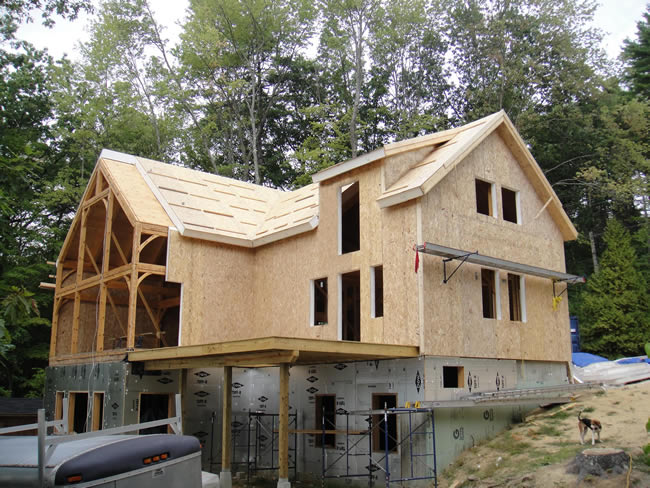

I am also going to confess that I routinely call them “SIP panels” … which is a bit like saying “ATM machine”. The SIP research home was five times more airtight than the wood-frame room when measured by a blower door test. homes, one made of SIPs and one with conventional wood framing and fiberglass insulation. To give you an idea, in a comparative test conducted by Oak Ridge National Laboratories (a multi-program science and technology national laboratory managed for the United States Department of Energy), researchers built two identical 2,600 sq. Almost any article you read regarding energy-efficient construction, how tight the house is to air leakage is a huge consideration in the final thermal performance. Outside air leaking into the home, or air infiltration, is responsible for 40 percent of heat or cooling loss in the average home.


Air-Tightness – fewer joints and OSB sheathing on two sides allow for a much tighter building assembly.Fast Construction Method – erection of the panels is estimated to be as much as 3 times faster than traditional framing.Low Waste (Factory Built) – panels are pre-engineered and produced in a controlled environment.Integral Insulation – solid core is expanded polystyrene (EPS) which has an R value of 3.8/inch.Excellent Thermal Performance – minimal thermal bridges with the elimination of traditional wood 2×6 framing at 16″ o.c.There are several advantages to building with a system like this, including: SIPs are a high performance building system where the interior structural portion of the wall is assembled like an ice cream sandwich using a 7/16″ layer of oriented strand board (OSB) as the outside of the sandwich, and in our case, a 5 1/2″ interior cavity filled with styrofoam, which would be the ice cream. We are building the CHouse Modern using Structurally Insulated Panels, or SIPs as they are commonly referenced.


 0 kommentar(er)
0 kommentar(er)
